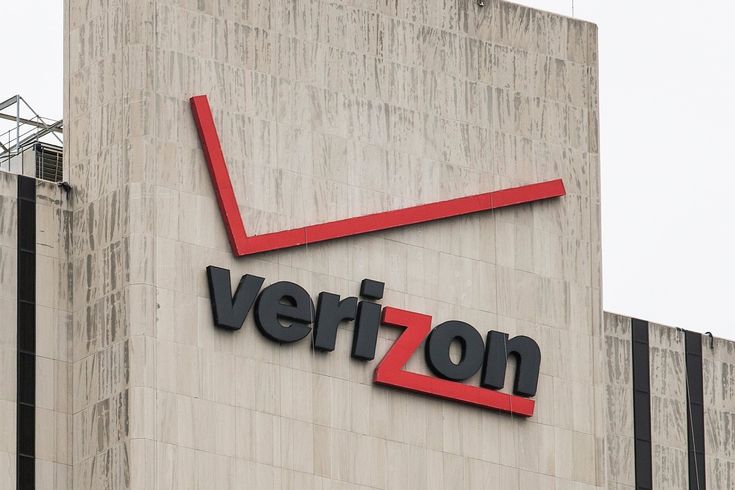Imagine waking up to find your phone showing nothing but “SOS” — no calls, no texts, no internet. Across the United States, thousands of Verizon users faced this digital nightmare as a massive network outage struck without warning, cutting them off from family, work, and even emergency services.
America Telecommunication
In an age where smartphones serve as lifelines, a sudden blackout in communication can trigger widespread panic. That’s exactly what unfolded when Verizon, one of the largest wireless carriers in the United States, experienced a nationwide service outage this week.
Reports started to come in from New York to California about phones that displayed just the terrifying word “SOS.” This meant that millions of Verizon customers could only make emergency calls; they were unable to check their emails, text loved ones, or stream their daily news updates.
The disruption struck during morning hours, leaving thousands stranded in workplaces, commuters unable to access ride-hailing apps, and families scrambling to connect with each other.
For many users, the first shock came when they saw the letters SOS flashing at the top of their phone screens. This wasn’t just a glitchy symbol — it meant their phones had lost connection to Verizon’s network entirely and could only connect to emergency services like 911.
Social media platforms were flooded with confused questions:
- “Why is my phone showing SOS?”
- “Is Verizon down everywhere?”
- “If I can’t even schedule an Uber, how am I going to get to work?”
Within hours, #VerizonDown began trending on X (formerly Twitter), with thousands of frustrated customers posting screenshots of their devices locked in SOS mode.
Early reports suggested the outage was widespread, affecting both urban and rural regions. New York, Chicago, Los Angeles, Dallas, and Atlanta were among the major cities that suffered the most. According to Downdetector, a website that tracks service interruptions, Verizon outage reports skyrocketed into the tens of thousands within minutes.
Unlike localized service disruptions, this one carried the hallmarks of a nationwide technical breakdown, drawing comparisons to past outages that crippled mobile networks across the U.S.
Verizon acknowledged the issue shortly after complaints went viral. In a brief statement, the company said:
“We are aware of a network disruption affecting wireless services in several regions. In order to restore connectivity as soon as possible, our personnel are working hard. We sincerely apologize to our consumers for any inconvenience this may have caused.
For most people, the outage was more than a minor inconvenience — it was a serious disruption to daily routines.
- Many commuters were forced to rush for public transportation since they were unable to utilize ride-hailing applications like Uber and Lyft.
- Remote workers who relied on mobile hotspots were suddenly locked out of video calls, emails, and project platforms.
- Parents and students reported difficulties coordinating school pickups and after-class activities.
- Emergency concerns loomed large, with some customers worried about being unable to call for help if they needed it.
On X, one frustrated user wrote:
“I can’t even call my child’s school since my phone is stuck on SOS. This is really annoying.
Another commented:
Verizon is supposed to be dependable, therefore we pay more for it. Now, when I need it most, nothing works.
The outage didn’t just affect individuals — businesses across industries felt the shockwaves. Small business owners who rely on Verizon for transactions reported that payment systems were down. Delivery drivers using Verizon-powered GPS found themselves unable to navigate efficiently, leading to delays.
Retailers in several cities noted reduced footfall during the outage, as customers couldn’t use digital payment methods linked to Verizon networks. For an economy increasingly tied to connectivity, even a few hours of disruption carried costly consequences.
Whenever a major telecom outage occurs, the question of cybersecurity inevitably arises. While Verizon has not confirmed the exact cause, industry experts have speculated on several possibilities:
- Network Maintenance Gone Wrong – Routine infrastructure upgrades sometimes trigger unforeseen failures.
- Software Error- A blackout might have been caused by a broad error in Verizon’s network management system.
- Cyberattack – Though no evidence has surfaced, large telecoms remain prime targets for hackers seeking disruption.
Cybersecurity analyst Jordan Ellis noted:
“It is unlikely to be a minor issue considering the extent of the outage. While cyberattacks can’t be ruled out, we also need to remember that telecom infrastructure is complex. A single error can ripple across an entire network.”
The outage raised concerns among local governments and emergency service providers. As Verizon customers tried to call 911 or city hotlines, some areas reported more demand on landlines and other carriers.
Federal agencies, including the Federal Communications Commission (FCC), reportedly began monitoring the situation closely. The FCC has historically stepped in during major outages to ensure that telecom operators prioritize restoring emergency connectivity.
A spokesperson for the FCC said:
“We are in contact with Verizon to determine the impact on critical communications, and we are aware of the outage.”
This outage highlights a sobering reality: our daily lives hinge on just a handful of major telecom providers. When one falters, millions are instantly thrown into disarray.
Experts argue that such incidents serve as a wake-up call for both individuals and businesses to develop backup communication plans. Options include keeping secondary SIM cards, maintaining landline connections, or ensuring access to offline maps and emergency contacts.
Dr. Susan Marks, a digital dependency researcher, summed it up:
“This isn’t just about inconvenience. Our society has centralized its lifelines into mobile networks. The repercussions of those lifelines breaking show just how brittle modern communication is.”
For Verizon, one of the top wireless carriers in the country, this outage represents more than a technical hiccup — it’s a reputational setback. Customers already grappling with high bills and competition from rival carriers were quick to vent their anger.
Some even suggested switching to T-Mobile or AT&T, raising concerns that Verizon could face a wave of customer churn if outages continue.
Loyal customers, however, called for transparency rather than blame. One subscriber wrote:
“I’ve been with Verizon for 15 years. Outages happen. But what we need is honesty and clear communication about what went wrong and how they’ll fix it.”
By late afternoon, Verizon reported that it had restored connectivity for “most users,” though scattered reports indicated that some regions were still experiencing disruptions. Engineers worked through the night to stabilize the network, with additional teams monitoring for potential recurrences.
The company promised an internal investigation to determine the exact cause and pledged to release a detailed report to regulators and the public in the coming weeks.
The Verizon outage has left customers, businesses, and regulators with several pressing takeaways:
- Redundancy is key – Both individuals and companies need backup communication systems.
- Transparency builds trust – Clear and frequent updates from carriers can help reduce frustration.
- Infrastructure resilience matters – With rising demand for 5G and beyond, carriers must invest in more robust systems.
- Emergency access must remain a priority – Ensuring reliable access to 911 and emergency services is critical during outages.
The nationwide Verizon outage was more than a technical glitch — it was a stark reminder of how vulnerable modern life is without seamless connectivity. For thousands of Americans, seeing “SOS” on their screens was both a moment of panic and a reflection of dependence on invisible networks.
As services gradually return to normal, questions linger: Will Verizon provide answers? Could this happen again? And most importantly — are we prepared for the next time the bars on our screens suddenly disappear?
Related News: Read More




Pingback: Afghanistan Earthquake: Over 800 Killed, Thousands Hurts..